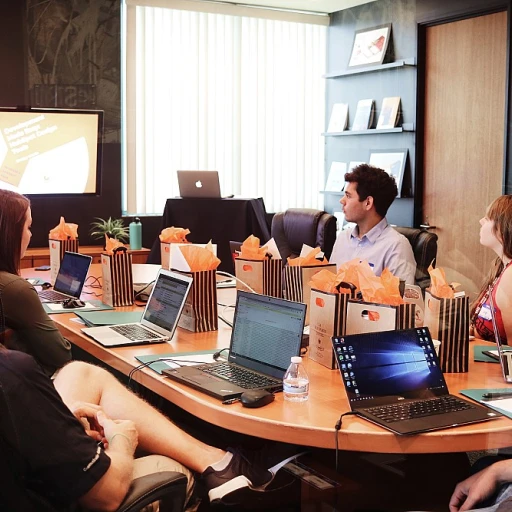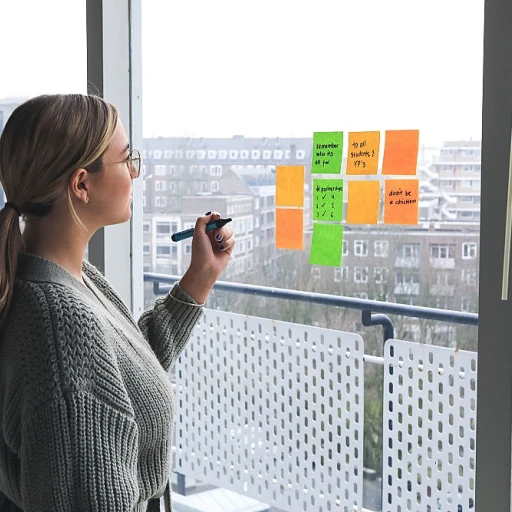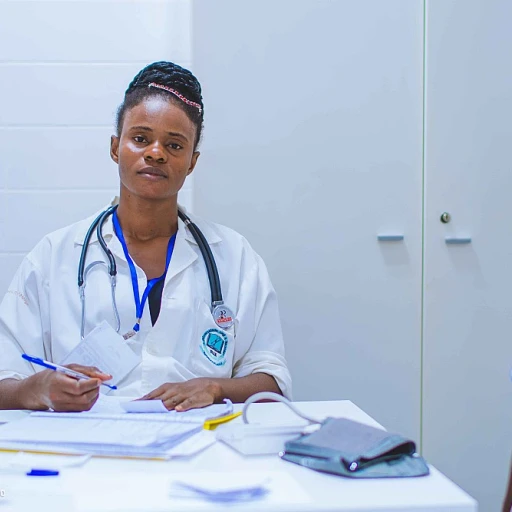
Understanding the Importance of Development Objectives
The Role of Clear Objectives in Professional Growth
Understanding the importance of development objectives is the first step in realizing the full potential of your career and professional life. Whether you're aiming for career advancement, enhanced performance, or improved skill sets, clear objectives provide a roadmap, guiding you across various stages of your professional journey. Setting objectives helps professionals maintain focus on long-term and short-term goals while organizing their learning and development paths. They serve as a foundational element for career goals and employee development, ensuring that growth is not only consistent but also meaningful.How Development Objectives Enhance Performance
Objectives in reskilling often center around performance goals, such as improving technical skills and boosting overall work performance. By clearly defining what skills are necessary and how they can be applied practically, employees can tailor their efforts effectively. For example, effective communication and project management skills could be identified as key areas for improvement, allowing for targeted personal development.Driving Professional and Personal Development with Clear Objectives
Development goals act as guiding principles for individuals and teams, aiding in personal development while aligning with the organization’s mission. Through strategic goal-setting, professionals can identify opportunities for employee development that may align with their career advancement plans, ensuring their skillsets remain relevant and competitive in the ever-evolving job market. Learn more about enhancing skills for better productivity, as this serves as a practical anchor to bolster your professional growth journey.Identifying Key Skills for Reskilling
Recognizing Essential Competencies for Job Transition
Understanding the key skills necessary for reskilling is a fundamental step in any development strategy. Identifying these competencies helps individuals and organizations to pinpoint their goals effectively and is pivotal in enhancing both professional growth and performance. In today's rapidly changing job market, adaptability becomes vital. For employees wishing to improve their career prospects, focusing on both hard and soft skills is essential. This includes:- Technical Skills: With advancements in technology, enhancing skills through courses in areas like data analysis or coding can offer significant career advancement opportunities.
- Communication Skills: Essential for team success, learning to convey ideas clearly impacts both personal and professional development.
- Problem-Solving Abilities: Effective problem-solving skills are invaluable in navigating challenges and can contribute to reaching performance goals more efficiently.
- Leadership and Management: Development in leadership skills is often sought by those aiming for long-term career growth. For practical insights into this competency, consider the reskilling approaches outlined in the reskilling perspective in leadership.
Crafting SMART Development Objectives
Establishing Effective Development Goals using the SMART Methodology
When setting development goals for reskilling, utilizing the SMART methodology is essential. This involves crafting objectives that are Specific, Measurable, Achievable, Relevant, and Time-bound. Such clarity not only aids in individual professional growth but also enhances team performance.
To create development goals that work effectively, consider the following examples:
- Specific: Rather than setting a broad goal like "improve communication," focus on "enhancing public speaking skills through a monthly workshop."
- Measurable: Ensure there's a way to measure success, such as reaching a specific feedback score from public speaking presentations.
- Achievable: Goals should be within reach, considering current abilities and time. For instance, aiming to lead one presentation per quarter might be more realistic than monthly for some.
- Relevant: Align goals with personal and organizational development goals, like improving technical skills that directly impact current job responsibilities.
- Time-bound: Set a deadline to maintain motivation and focus, such as completing a project management course within six months.
A strategic application of the SMART criteria not only facilitates personal development but also contributes to broader career advancement. With clear, actionable objectives, employees can track their progress effectively, enhancing their ability to adapt and refine these goals over time. This approach ensures ongoing professional development and empowers employees to seize growth opportunities within their workplace.
For more insights on setting meaningful goals and integrating them into a comprehensive workplace plan, explore our detailed guide on understanding the role of a workplace skills plan in reskilling.
Overcoming Challenges in Setting Objectives
Challenges Faced While Defining Development Objectives
Creating development objectives for reskilling can present unique challenges, often due to various factors that influence both personal and professional aspects of one's life. Let's delve into some typical hurdles and how they can be effectively tackled. Firstly, balancing time management with existing work responsibilities often creates friction when setting developmental goals. Employees may struggle to dedicate enough time to learning and growing within their career while juggling their current duties. It's essential to prioritize tasks effectively and plan for both short-term and long-term objectives. Utilizing time management techniques, such as setting clear boundaries in one's work life, can help alleviate these pressures. Moreover, determining the right skills to focus on can be daunting. With the vast array of skills required in today’s ever-evolving workplace, deciding on which skills will best improve one's professional development is critical. Communication skills and project management, for example, are often pivotal, whether you are in leadership or part of a team. To combat this uncertainty, engaging in a skills assessment can provide clarity and direct focus on areas that will bolster career advancement. Another significant challenge is aligning personal development goals with organizational performance goals. Often, there might be a disconnect between what employees aspire to achieve and the organization's strategic vision. Facilitating open dialogues can aid in ensuring that personal and company objectives are mutually beneficial. Examples of this include holding regular meetings for feedback and creating collaborative platforms for team engagement. Finally, lack of resources can hinder employee development. Access to training materials, mentorship opportunities, and technological tools are necessary to nurture professional growth. Organizations must invest in learning platforms and offer support structures to support their employees' journey towards career goals. Encouraging a culture of continuous learning will promote not only personal growth but also the organization's long-term success. By acknowledging these challenges and developing strategic plans to overcome them, development goals become more attainable and relevant to both individuals and the organization as a whole.Utilizing Resources for Achieving Objectives
Leveraging Resources to Achieve Your Objectives
Reskilling is not just about setting clear development goals and identifying key skills; it's also about utilizing the right resources to help achieve those objectives. These resources can significantly impact your professional development by refining your skills, bridging any knowledge gaps, and maintaining an upward career trajectory. To support continuous learning, employees should consider accessing a variety of resources. Here are some options that can serve as invaluable tools for professional growth:- Workshops and Seminars: Engaging in workshops and seminars can provide immediate insights into industry trends and skill development techniques. Participation can enhance communication skills, project management, and public speaking abilities.
- Online Learning Platforms: With the proliferation of platforms offering courses on technical skills and management, employees have an opportunity to learn at their own pace. These resources promote both short term and long term goal attainment.
- Mentorship Programs: Partnering with a mentor can help identify areas for professional development while offering guidance to improve performance and leadership skills. Mentors provide practical advice to help set and achieve performance goals.
- Books and Publications: Keeping up with professional literature aids in staying updated and fosters personal development. Reading enhances critical problem solving skills and broadens understanding of work life dynamics.
- Company Resources: Many organizations offer in-house training or support employee development initiatives. These resources could include access to leadership development programs, time management workshops, or public speaking courses.
Tracking Progress and Adapting Objectives
Monitoring Progress and Being Agile
Tracking the progress of development goals is vital for assessing both individual and organizational growth. Effective goal setting includes establishing benchmarks that employees and management can review regularly. This process not only helps in aligning the progress with the long-term objectives but also plays a crucial role in identifying areas where further development is necessary.
To efficiently track progress:
- Regular Check-Ins: Establish regular intervals for reviewing goals and objectives. These check-ins help individuals and teams to assess their development and make necessary adjustments in their learning paths.
- Feedback Mechanisms: Implement feedback loops where employees can receive constructive criticism and suggestions, enhancing their problem-solving and communication skills.
- Use Technology: Leverage project management tools that track progress and provide insights into performance. These tools assist in managing time and prioritizing tasks efficiently.
- Adjust Objectives: Be ready to adapt development goals based on performance outcomes. The dynamic nature of work and industry trends requires frequent realignment of goals work.
Adapting to challenges and unforeseen circumstances is part of the process. By establishing a culture of agility within the organization, you allow for flexible adjustment in goal setting, which is critical for professional growth and career advancement.
This ongoing evaluation and adaptation foster an environment of continuous learning and personal development, ensuring employees gain opportunities for leadership and improve their professional skills effectively.













